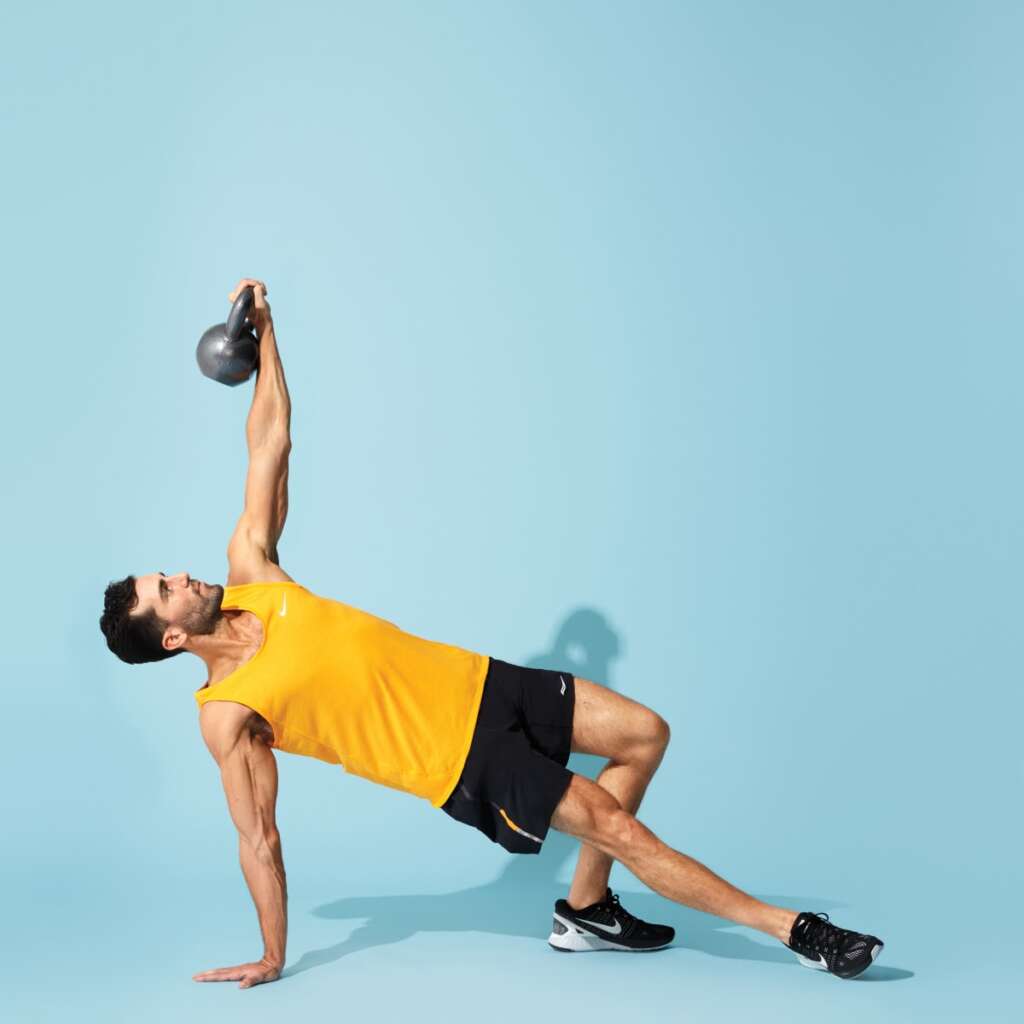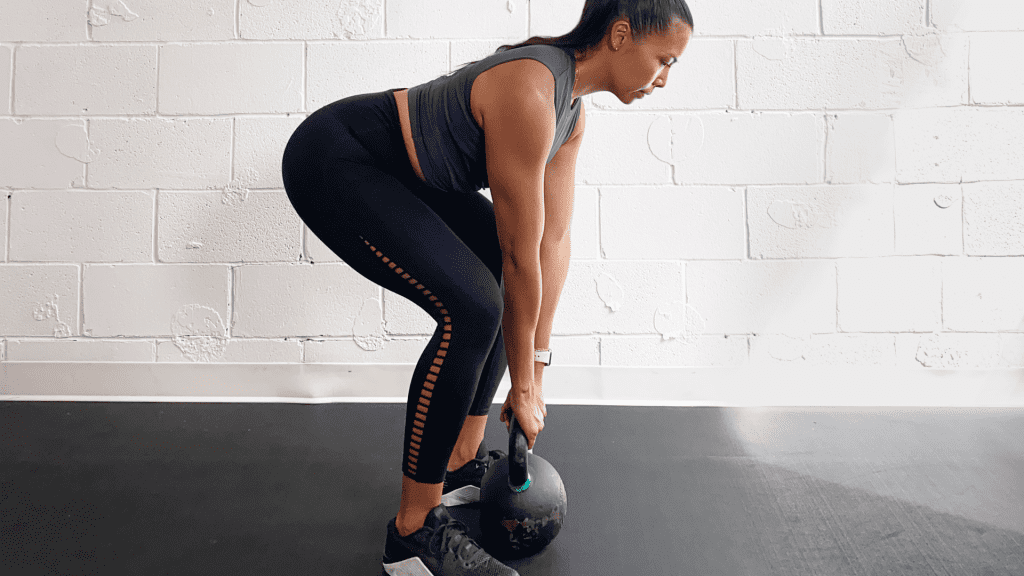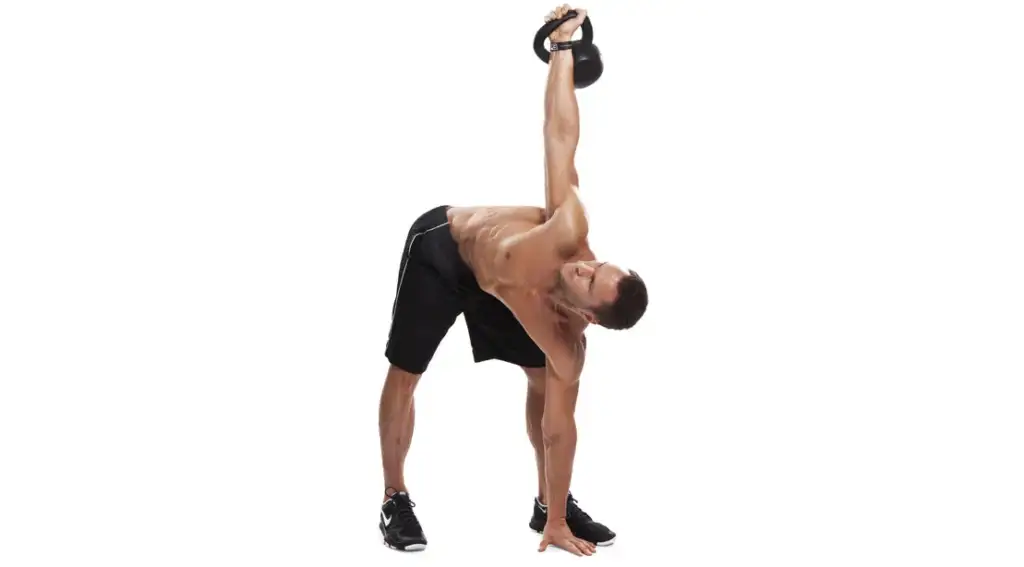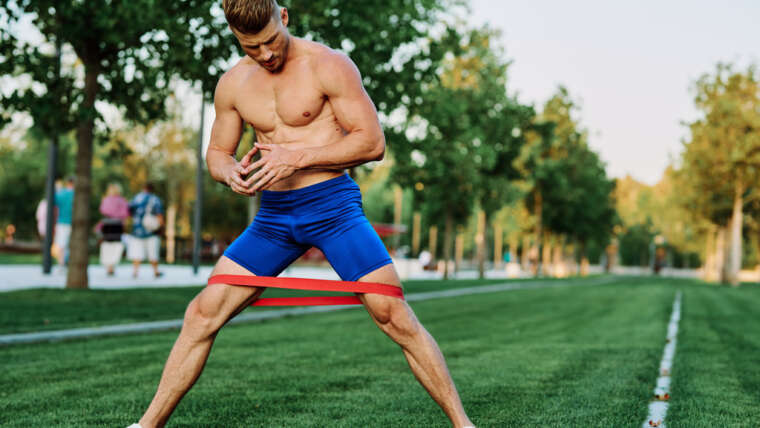Are you an avid rock climber looking to maximize your upper body strength and core power? Kettlebell exercises are the perfect solution.
With a few simple moves, you can quickly gain the muscle development, agility, and balance needed for peak performance at the climbing wall.
In this blog post, we’ll cover some of the best kettlebell exercises for rock climbers so that you can unleash your inner climbing beast.
So, what are we waiting for?
Let’s get started:
Top 5 Kettlebell Exercises For Rock Climbing
Here is a list of kettlebell exercises for rock climbers that are bound to produce results:
1. Kettlebell Turkish Get-Up
Kettlebell Turkish Get-Up (TGU) could be a game-changing workout for rock climbers to up their performance.
Here is a step-by-step guide to performing a kettlebell TGU:
- Lie on your back with your legs bent and your feet flat on the ground. Hold the kettlebell with your right hand and extend your right arm straight up towards the ceiling.
- Press the kettlebell towards the ceiling and use your left arm to prop yourself onto your left elbow.
- Lift your hips off the ground and slide your left leg underneath you, placing your left knee on the ground.
- Keep your right arm extended, and use your left hand to push yourself up into a standing position.
- Once you are standing, reverse the movements to return to the starting position.
- Lower yourself down onto your left knee and place your left hand on the ground.
- Slide your right leg back and come down onto your right elbow.
- Lower your right arm back down to the starting position and repeat for the desired number of repetitions before switching sides.
Tips
- Keep your eyes on the kettlebell at all times.
- Keep your core engaged throughout the entire movement.
- Use smooth, controlled movements to prevent any jerking or twisting of the body.
- Focus on activating your arm and leg muscles to maintain proper alignment and form.
- Start with a lighter kettlebell and gradually work your way up to a heavier weight as you become more comfortable with the movement.
2. Kettlebell Deadlift
- Kettlebell deadlift is a great exercise for building strength in your lower body, specifically your glutes, hamstrings, and lower back, which are essential for rock climbing.
- Here is a step-by-step guide to performing a kettlebell deadlift:
- Start by standing with your feet shoulder-width apart, and your toes pointed slightly outwards. Place the kettlebell on the ground in front of you.
- Hinge at your hips and bend your knees to reach down and grab the kettlebell with both hands. Keep your back straight and your shoulders down.
- Brace your core and push your feet into the ground to stand up, lifting the kettlebell with you. Keep the kettlebell close to your body and your arms straight.
- Once you are standing up straight, pause for a moment, and then lower the kettlebell back down to the ground, hinging at your hips and bending your knees.
- Repeat for the desired number of repetitions.
Tips
- Keep your back straight throughout the entire movement to prevent injury.
- Make sure to engage your glutes and hamstrings as you lift the kettlebell to activate these muscle groups.
- Keep your shoulders down and away from your ears to prevent tension in your neck and upper back.
- Start with a lighter kettlebell and gradually work your way up to a heavier weight as you become more comfortable with the movement.
3. Kettlebell High Pull
Are you looking for one of the best kettlebell workouts for rock climbers? If so, adding kettlebell high pulls into your exercise routine could yield fruitful results.
Here is a step-by-step guide to performing a kettlebell High Pull:
- Start by standing with your feet shoulder-width apart, and your toes pointed slightly outwards. Hold the kettlebell with both hands in front of your thighs, palms facing towards you.
- Hinge at your hips and bend your knees slightly to lower the kettlebell towards the ground, keeping your back straight and your shoulders down.
- Push your feet into the ground to stand up and, at the same time, pull the kettlebell up towards your chin, keeping your elbows close to your body.
- Once the kettlebell reaches chin height, pause for a moment, and then lower it back down to the starting position.
- Repeat for the desired number of repetitions.
Tips
- Keep your back straight throughout the entire movement to prevent injury.
- Keep your elbows close to your body as you lift the kettlebell to activate your shoulder and back muscles.
- Make sure to engage your core and glutes to maintain proper alignment and form.
- Start with a lighter kettlebell and gradually work your way up to a heavier weight as you become more comfortable with the movement.
4. Kettlebell Windmill
The Kettlebell Windmill is a great kettlebell exercise for rock climbers as it strengthens the shoulders, core, hips, and hamstrings.
Here’s a step-by-step guide on how to do it:
- Start with your feet shoulder-width apart and the kettlebell on the floor in front of you.
- Step your left foot back and slightly to the side, keeping your right foot planted firmly on the ground.
- Pick up the kettlebell with your right hand and hold it overhead with your arm straight.
- Keep your eyes on the kettlebell as you hinge at the hips and begin to lower your torso toward the ground. Keep your right arm straight and your left arm out to the side for balance.
- Lower your torso until your left hand can touch the ground while keeping your right arm straight up overhead.
- Pause briefly in the bottom position, then use your core and hips to drive your body back up to the starting position.
- Repeat for the desired number of reps, then switch sides and perform the exercise with your left hand holding the kettlebell.
Tips
- Keep your shoulders down and engaged throughout the exercise to maintain stability and prevent injury. Imagine pulling your shoulder blades down and back as you hold the kettlebell overhead.
- Pay attention to your breathing during the exercise, inhaling deeply as you lower your body and exhaling as you push back up to the starting position. This will help you maintain focus and control throughout the movement.
- To avoid unnecessary strain on your lower back, make sure to keep your hips square and facing forward throughout the exercise. This will help you engage your core and prevent twisting or bending at the waist.
5. One Arm Kettlebell Swings
The one-arm kettlebell swing is an excellent kettlebell workout for rock climbers as it strengthens the hips, glutes, and lower back.
Here’s a step-by-step guide on how to do it:
- Begin by standing with your feet shoulder-width apart and the kettlebell on the ground in front of you.
- Grab the kettlebell with one hand, keeping your back straight and your core engaged.
- Swing the kettlebell back between your legs, hinging at the hips, and keeping your arms straight.
- Drive your hips forward and swing the kettlebell up to shoulder height, using the momentum generated by the swing.
- At the top of the swing, pause briefly and squeeze your glutes to maximize the contraction.
- Allow the kettlebell to swing back down between your legs, and repeat for the desired number of reps.
- Once you’ve completed your reps on one side, switch hands and repeat the exercise with the other arm.
Tips
- As you swing the kettlebell up, engage your lats (the muscles on the sides of your back) to help generate power and control the movement.
- Avoid bending your wrist as you swing the kettlebell, which can put unnecessary strain on your joints. Instead, keep your wrist neutral and allow the momentum of the swing to guide the movement.
- When you swing the kettlebell up, be careful not to hyperextend your lower back or over-arch your spine. Instead, focus on maintaining a neutral spine throughout the exercise.
- Use your breath to help maintain a consistent rhythm throughout the exercise. Inhale as you swing the kettlebell back between your legs, and exhale forcefully as you drive your hips forward and swing the kettlebell up.
- Like any exercise, it’s important to practice proper form and gradually increase the weight over time. Start with a light kettlebell and focus on mastering the movement before increasing the weight.
Final Remarks
With all of the kettlebell exercises that can benefit rock climbers, it’s important to ensure you have a basic understanding of how to use them before emphasizing any particular lift.
Not only will this prevent injuries, but it will also challenge your body in healthy ways, allowing you to reach your climbing goals faster and more efficiently.
Utilizing kettlebells as part of a comprehensive rock-climbing workout plan has been proven to increase strength and endurance for sport climbing, improve the flexibility for lead climbs, and help you maintain a healthier bouldering balance.
As long as exercises are done properly with the right weight selection and intensity level, there should be no problem achieving your desired level of fitness as a climber.
Therefore, we hope this blog post serves as motivation for all “inner climbing beasts” out there to begin prepping for success on their next climbing venture.









